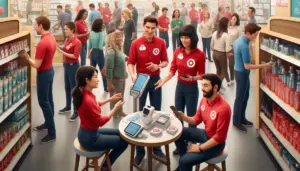Do you know people that run their business and it seems they never get caught up in the paperwork, clutter and mess you seem to find yourself in everyday?
How did they get to this magical place?
They very likely had help.
As a retailer you have many things to consider: inventory, point-of-sale systems, e-commerce, bookkeeping, sales tax in multiple jurisdictions, maybe even manufacturing. So how do those other folks manage all of that without spending nights and weekends putting it all together?
Most likely, they utilize a cloud-based integrated set of systems, and they are syncing it all together with Xero software. Those applications are designed to integrate your point-of-sale, inventory, payroll, sales tax – and yes, all coming together in your cloud-based accounting system!
So what would your life be like if you stopped and called someone to help you achieve this…and why would you want to?
Let’s first discuss what this would look like to you – then we will get into the benefits.
The first thing I want to tell you: you’re not alone!
We see so many business owners that might have an excellent cloud-based point-of-sale system, or even a great e-commerce platform – but the technology stops there. This is good enough to create the appearance of a business that is running smoothly and very likely providing you real-time sales data and other metrics. The problem is nothing else is integrated – so instead of spending your valuable time analyzing your business, you find yourself trying to piece together your sales, expenses and inventory – all the while making sure your cash flow is on this side of zero.
So what we want to do is create an integrated network of software that “talks” to each other in order to avoid having to manually enter in data in our accounting software, or the inventory system in order to make sure we place our next order on time.
So you might be asking – does that exist? Yes, it does.
Here’s how it works:
- We find the right cloud-based Point-of-Sale system for your particular business – maybe you already have it, maybe you don’t. We would consider things like, do you have an actual brick and mortar store, do you travel when selling, do you make your own product or purchase it, do you hold inventory, do you offer discounts or have a rewards program, do you have employees, do you have a website where you also sell your products…a lot of things to consider, but very important during the process of finding the right solution.
- Based on those findings we determine if we will need a separate inventory/manufacturing system. If you have a more complicated inventory setup, such as bundles or if you make your own product then we will want to really dive into this area – there are a lot of things to think about – but the goods news is there are many very good options that integrate with the other software solutions.
- All the while we are considering that we will want to integrate the POS and inventory system into our accounting system, Xero. This will allow the sales to feed directly into the accounting system daily – no keying them in on the weekend anymore! It will also allow the inventory and cost of goods to be properly reflected in the financials so we can really understand how our company is performing without having to wait for our accountant to send us reports 30 days later!
- Then if we have employee’s we need to pay we can hook in a payroll system that will allow our employee’s to onboard themselves, pay them via direct deposit, obtain and update their own information and finally it will file and pay the payroll taxes automatically. So another area of concern gone – the IRS is happy! Oh, one more thing – if we have hourly employee’s we will bolt on a time tracking app where your employee’s can clock in on your iPad in the store, keep track of their hours and rearrange schedules on their phone. Nice!
- Last but not least – start to run your business – it’s no longer running you!
The next question is – what is the main benefit to you for finding someone to help you do this? Of course, besides the nights and weekends you will get back!
But before we get there, I have a couple of questions for you:
- Besides looking at your bank account balance, do you know how your business is really performing? Do you know where you’re making money, where you might be losing money?
- Does your bookkeeper or accountant send your financials to you a month or so after everything already happened? Are you feeling that at that point it’s irrelevant – your competition probably knows where they’re making & losing money and have already adjusted – but you haven’t.
So now we get to the number one reason why you should seriously considering spending the time and money to move your business to a cloud-based integrated platform: Financial Visibility
What exactly is financial visibility?
I define financial visibility as having the ability to see the current financial health of your company while also understanding the drivers that will impact the future profitability.
Financial visibility provides you more control over the decision making of your company
You might be wondering what types of questions can be answered when we achieve financial visibility:
- Will I be able to make payroll next week? How about next month?
- What are the top 10 products we make the most money on?
- Which employee is least productive/most productive
- Did my marketing campaign increase sales? By how much?
- Based on the trends over the past 6 months, what is a forecast for the next 6 months
- Should I hire another person
- Should we open a new store
These are just a few questions that can be answered by creating financial visibility – and it all starts with setting up a cloud-based platform that “talks” and reduces the amount of manual input and increases the speed at which information is available to you.
If you’re ready to start the process then complete this short questionnaire about your current business and we will get in touch for a free analysis back to you about how we think you can start to create that integrated network of systems for your business
Read more at smartconcepts.co








